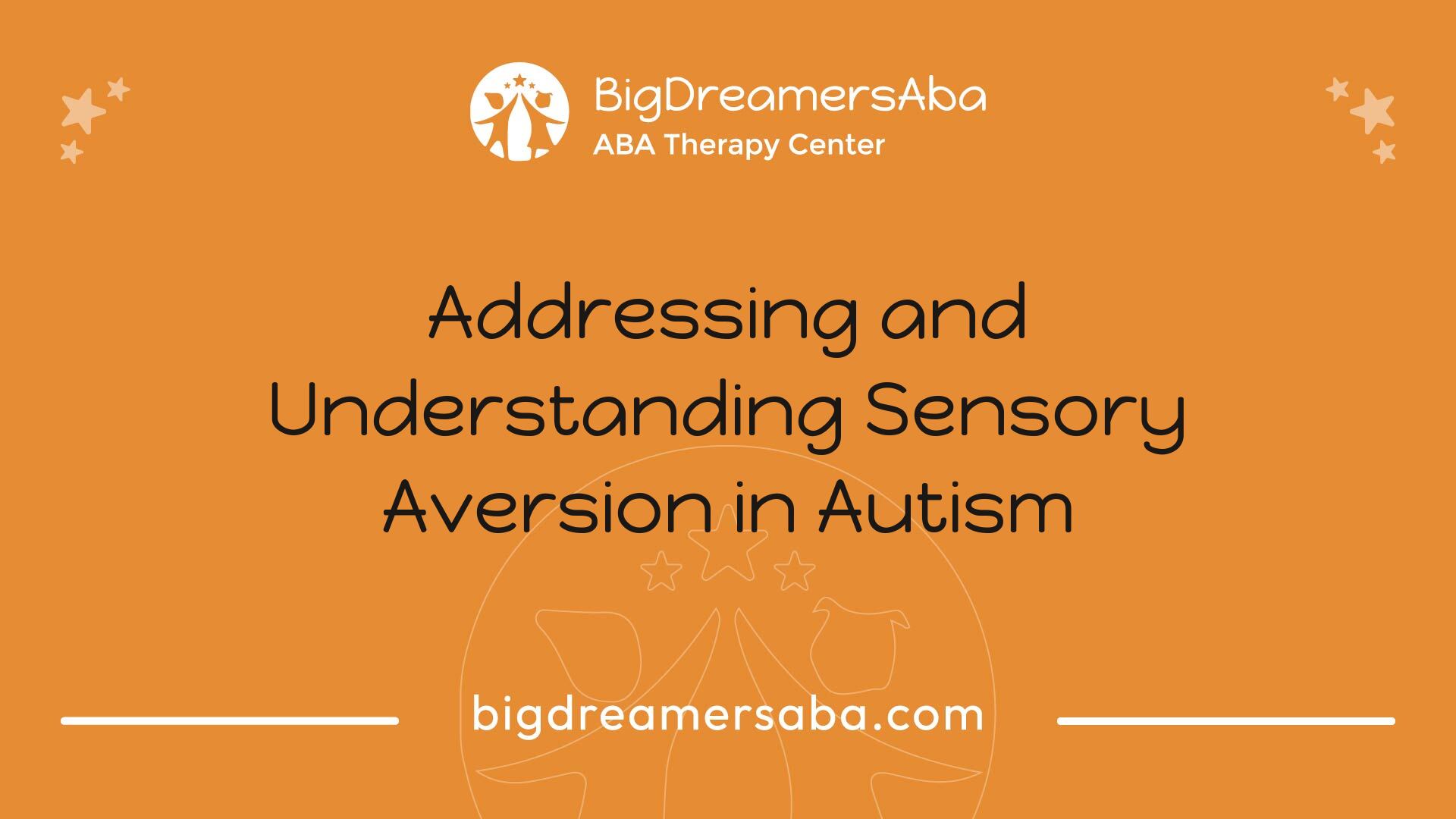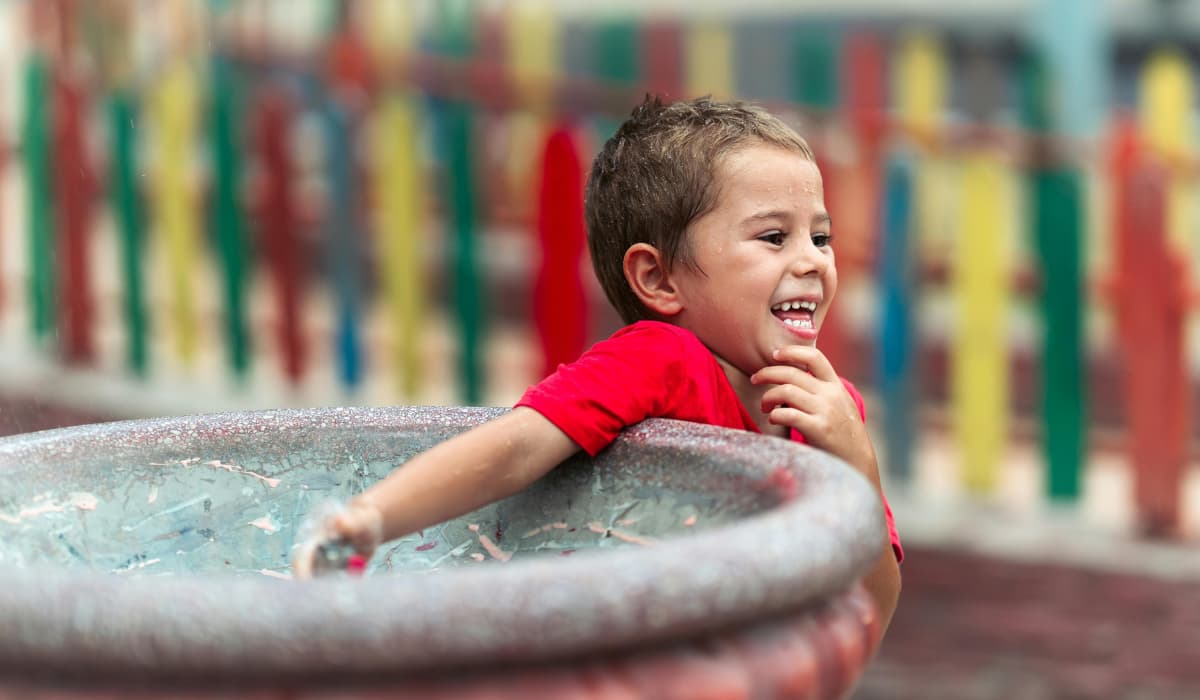Addressing and Understanding Sensory Aversion in Autism
Explore addressing sensory aversion in autism, understanding challenges, and practical strategies for support.


Understanding Sensory Challenges
Individuals with autism often face significant sensory challenges that can greatly impact their daily lives. Understanding these challenges is crucial for addressing sensory aversion in autism.
The Prevalence of Sensory Issues in Autism
The prevalence of sensory issues among individuals on the autism spectrum is remarkably high. Research suggests that over 90% of individuals with autism experience some form of sensory processing difficulties [1]. These sensory challenges are not just common; they are integral to the diagnostic criteria for autism spectrum disorder.
Sensory IssuePrevalence (%)Any sensory processing difficulties90+
Types of Sensory Sensitivities
Sensory sensitivities can manifest in numerous ways, typically categorized into hypersensitivity (over-responsiveness) and hyposensitivity (under-responsiveness). Most individuals experience a combination of both types. Hypersensitivity may involve aversions to bright lights, specific sounds, smells, textures, and tastes, leading to avoidance behaviors. For example, individuals might pull away from physical touch, cover their ears in response to loud noises, or avoid certain types of clothing.
Common Sensory Sensitivities
Type of SensitivityDescriptionHypersensitivityOver-responsiveness to stimuli, leading to discomfort or distress. Common examples include aversion to bright lights and loud noises.HyposensitivityUnder-responsiveness to stimuli, resulting in a higher threshold for sensation. Individuals may seek out intense sensory experiences.
In addition to these types, sensory sensitivity can affect various aspects of life, including eating habits. Sensory sensitivities related to food, such as oral defensiveness and discomfort with certain textures or smells, may contribute to food selectivity and acceptance difficulties in children with autism [3].
Understanding these sensory challenges is essential for providing effective support and creating a sensory-friendly environment for individuals on the autism spectrum. For more information on creating supportive spaces, visit our article on creating a sensory-friendly environment.

Impact on Daily Life
Understanding the daily impact of sensory challenges is crucial for those supporting individuals with autism. Sensory sensitivities significantly affect how these individuals experience the world around them.
Sensory Sensitivity in Autism
Sensory sensitivity refers to how a person's senses react to stimuli, and for individuals with autism, this sensitivity is often heightened. Research suggests that over 90% of individuals with autism encounter some form of sensory processing difficulties, manifesting as either hypersensitivity or hyposensitivity to various sensations [1].
This heightened sensitivity can significantly impact daily activities, including:
Sensory ModalityExamples of SensitivityTouchAversion to certain textures, discomfort with clothing tagsSoundOverreaction to loud noises, distress from crowded environmentsSmellDislike of strong odors, avoidance of specific scentsVisualDiscomfort from bright lights, difficulty with busy backgrounds
These sensitivities can lead to challenges in social situations, school, and everyday tasks. Individuals may become overwhelmed and exhibit disruptive behaviors due to these sensory experiences.
Sensory Processing Disorder in ASD
Sensory Processing Disorder (SPD) is often associated with autism spectrum disorder (ASD) and can manifest as being either oversensitive or undersensitive to sensory input [1]. This condition complicates the ability to process and respond appropriately to sensory information, which can cause significant difficulties in everyday life.
Research indicates that up to 90% of people with ASD experience sensory hypersensitivity, which is linked to behavioral challenges. These disruptions can arise from limitations in self-regulation and difficulties in identifying physiological sensations or emotions.
The various forms of sensory processing abnormalities in children with ASD include:
Sensory ModalityManifestationsPainHypersensitivity to certain physical sensationsSoundAvoidance of specific noises or texturesSmellAversion to certain scents or objectsSeekingEngaging in behavior that seeks sensory input
Such alterations can hinder the development and participation of children with autism in social contexts, such as school, and can affect their interactions with peers [4]. Addressing sensory aversion in autism is essential to creating supportive environments for individuals navigating these challenges. For more information and practical solutions, consider reviewing our section on creating a sensory-friendly environment.

Levels of Sensory Challenges
Understanding the levels of sensory challenges in individuals with autism helps in addressing sensory aversion effectively. The severity and categorization of sensory challenges can guide tailored interventions and support.
Categorization of Sensory Challenges
Sensory challenges can be categorized into three levels based on the degree of support required, according to the Diagnostic and Statistical Manual of Mental Disorders, Fifth Edition (DSM-5). These levels are:
LevelDescriptionLevel 1Requiring Support: Individuals may experience mild symptoms that can often be managed with some support.Level 2Requiring Substantial Support: Individuals demonstrate more pronounced difficulties in sensory processing and require consistent assistance.Level 3Requiring Very Substantial Support: Individuals exhibit severe sensory challenges, necessitating significant interventions and support in daily activities.
These levels correspond to increasing severity of symptoms related to social communication and restrictive behaviors, including sensory behaviors [1].
Severity Levels in Sensory Behaviors
Sensory behaviors in individuals on the autism spectrum can range from mild to severe, with over 96% of children with Autism Spectrum Disorders (ASD) reporting various hypersensitivities and hyposensitivities [5]. These behaviors can persist into adulthood and can significantly impact a person's ability to interact with their environment. The severity levels can be summarized as follows:
Severity LevelDescriptionMildOccasional discomfort or distraction from sensory stimuli; manageable with minor adjustments.ModerateNoticeable distress in response to stimuli; may require interventions or adaptations.SevereIntense reactions or aversions to sensory input; significant support and intervention are necessary.
Interventions addressing sensory challenges are increasingly being implemented to improve individuals' adaptive behaviors and their ability to navigate their surroundings. Professionals often incorporate sensory experiences into interventions, which may include weighted clothing or auditory stimuli, to help meet sensory needs and improve outcomes [6].
Each autistic individual presents unique sensory sensitivities, emphasizing the importance of understanding and categorizing sensory challenges effectively. For further insights into managing sensory experiences, explore our articles on understanding sensory processing issues in autism and managing sensory overload in autism.

Sensory Patterns in Children
Understanding sensory patterns in children with Autism Spectrum Disorder (ASD) is crucial for effectively addressing sensory aversion in autism. These patterns often differ significantly from those observed in neurotypical children, influencing various aspects of daily life, especially in educational environments.
Differences in Sensory Processing
Research indicates statistically significant differences in sensory processing patterns between children with ASD and neurotypical peers. Children with ASD exhibit alterations in auditory, visual, tactile, and movement processing [4]. Sensory processing abnormalities can occur in multiple modalities, leading to either hypersensitivity (over-responsiveness) or hyposensitivity (under-responsiveness) to different stimuli. Most children with autism experience a combination of both types. Common examples include:
Sensory ModalityResponse TypeDescriptionPainHypersensitivityAvoidance or extreme discomfort in response to pain stimuliAuditoryHypersensitivityAversion to specific sounds, leading to distress or withdrawalTactileHypersensitivityDiscomfort with certain textures or sensations, leading to avoidanceSmellHypersensitivityAversion to certain odors, causing distressMovementHyposensitivitySeeking excessive movement or physical activity for sensory input
These sensory differences can significantly impact the ability of children with ASD to function in social contexts, particularly in school settings.
Impact on Learning and Behavior
Sensory processing challenges can directly affect the learning and behavior of children with autism. Sensory issues are included in the diagnostic criteria for autism spectrum disorder, shaping how these children engage with their environment. Studies show that sensory alterations hinder participation and interaction in social contexts, which can lead to difficulties in academic achievement.
Children with ASD often struggle with the following behavioral and learning aspects:
Impact AreaDescriptionAttentionDifficulty focusing due to sensory overload or discomfortSocial InteractionChallenges in engaging with peers due to heightened sensitivityLearning StylesNeed for tailored teaching strategies due to unique sensory preferencesEmotional RegulationIncreased anxiety or frustration in response to overwhelming stimuli
To support children with autism, it is essential to develop strategies that accommodate their sensory needs. Resources like creating a sensory-friendly environment and utilizing sensory toys for autism can help mitigate sensory aversions and improve overall learning experiences. Understanding these sensory patterns aids caregivers and educators in fostering a supportive atmosphere that enhances both learning and behavioral outcomes.

Addressing Sensory Aversion
Sensory aversion can significantly impact individuals with Autism Spectrum Disorder (ASD). Addressing these sensory challenges through various therapeutic interventions and occupational therapy can enhance their daily lives.
Therapeutic Interventions
Therapeutic interventions for addressing sensory aversion in autism are designed to provide controlled sensory experiences. These interventions help individuals modulate and integrate information from their environments, thus promoting adaptive responses to sensory inputs. Many approaches focus on sensory play and exposure, which can create positive experiences with different sensory modalities [6].
These interventions may include:
Type of InterventionDescriptionSensory Integration TherapyIncorporates playful activities that engage different senses, helping to improve sensory processing.Weighted TherapyUtilizes weighted blankets or vests to provide deep pressure stimulation, which can calm anxiety and improve focus.Auditory InterventionsProvides controlled auditory experiences designed to either minimize unpleasant sounds or enhance positive auditory stimuli.Stimming SupportEncourages self-stimulatory behaviors that can help regulate sensory systems [2].
These interventions can significantly enhance daily functioning and participation in activities ranging from self-care to social interactions. The effectiveness of these approaches is currently being studied to assess their overall benefits for children aged 2-12 years.
Benefits of Occupational Therapy
Occupational therapy plays an integral role in addressing sensory aversion in individuals with ASD. Through personalized assessments, occupational therapists can identify specific sensory needs and implement strategies that enhance sensory integration.
The benefits of occupational therapy include:
By focusing on therapeutic interventions and occupational therapy, individuals with sensory aversion can navigate their environments more successfully. These strategies also encourage self-regulation and coping mechanisms, which are essential for managing sensory challenges. For additional support and resources, parents can explore sensory toys for autism and benefits of sensory toys.
Practical Strategies
Addressing sensory aversion in autism requires creating environments and utilizing tools that cater to specific sensory needs. The following sections discuss practical strategies to achieve this goal.
Creating Sensory-Friendly Environments
Designing a sensory-friendly environment can significantly benefit individuals with autism. Modifications might include adjusting lighting, reducing noise levels, and providing calming spaces to encourage relaxation. Consider the following recommendations for creating such environments:
FeatureDescriptionLightingUse soft, adjustable lighting to minimize visual overstimulation. Avoid harsh fluorescents.Noise ControlIncorporate sound-absorbing materials to reduce echo and noise levels. Consider white noise machines or soft music in certain spaces.Calming ZonesEstablish tranquil areas where individuals can retreat when overwhelmed. These areas could include comfortable seating, soft colors, and minimal distractions.Color SchemesUtilize soothing color palettes (e.g., blues, greens) to create a calming atmosphere. Bright or overly busy designs should be avoided.
Understanding and accommodating sensory issues can enhance comfort, increase learning opportunities, and facilitate socialization [2]. For more detailed ideas, visit our article on creating a sensory-friendly environment.
Tools and Strategies for Sensory Needs
Various tools and strategies can be employed to support sensory needs. These tools can help illustrate how to better engage with sensory experiences, ensuring comfort and enhancing daily life. Below are some effective tools and strategies:
Tool/StrategyPurposeSensory ToysIncorporate toys that engage multiple senses, aiding in sensory exploration and providing comfort; see our sensory toys for autism.Weighted BlanketsUse these for calming and to provide deep pressure stimulation, which can be comforting for many individuals on the spectrum.Fidget ToolsUtilize items that allow for discreet movement, helping to focus attention and reduce anxiety.DIY Sensory TablesCreate sensory play experiences; explore our ideas on diy sensory tables for autism to engage with various textures and materials.Calming Sensory RoomsDesign rooms specifically for relaxation; discover calming sensory room ideas for autism to provide a soothing experience.
Implementing these strategies ensures that individuals with autism are supported in their sensory experiences and helps manage challenges effectively. Understanding how to navigate sensory difficulties can significantly improve their ability to interact with their environment [6].
References
[2]:
[3]:
[4]:
[5]:
[6]:
Recent articles

Making Morning Time Stress Free for Kids With ABA Therapy

How ABA Programs Help Kids With Autism Develop Social Understanding
.jpg)